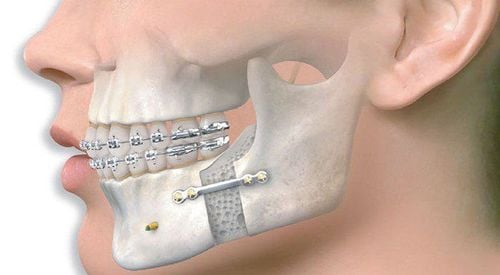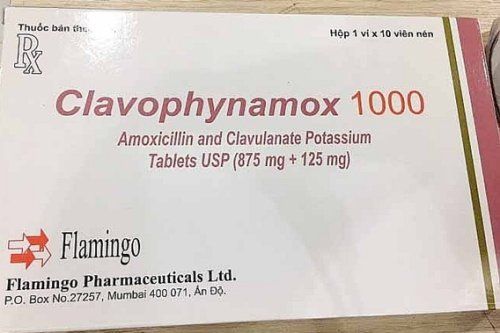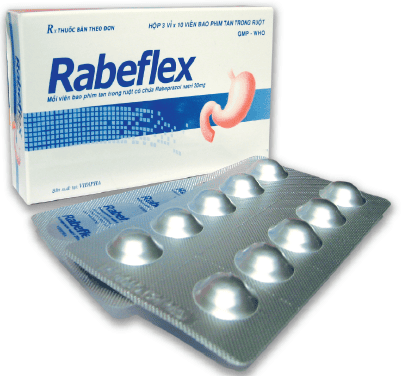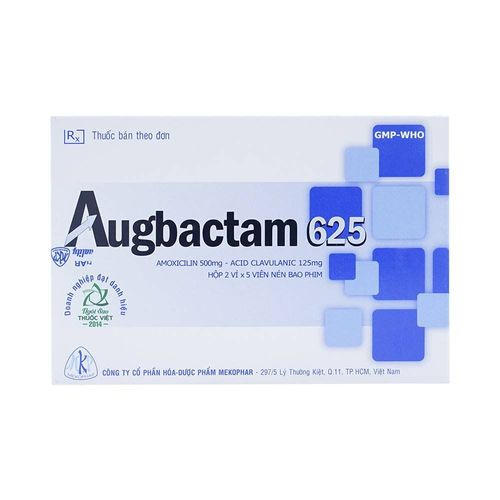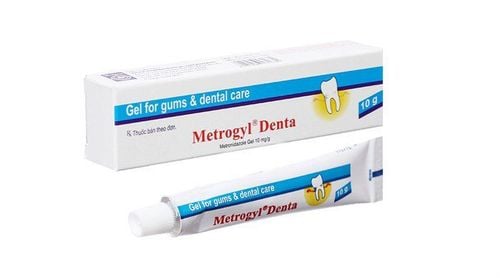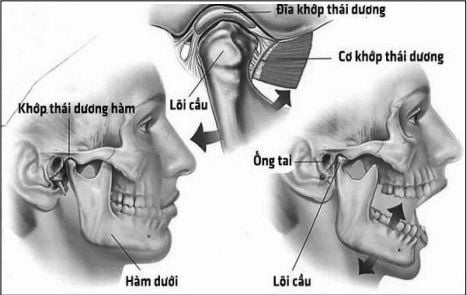This is an automatically translated article.
Sudden pain on one side of the jaw can be a warning sign of a medical problem, but in most cases it's not serious. Patients often assume that these are warning signs of a dental problem such as a sinus or tooth abscess. However, pain on one side of the jaw can be caused by a number of other causes. So what is pain on one side of the jaw and when should you see a doctor?
1. What is pain on one side of the jaw?
Possible causes of pain on one side of the jaw:
1.1. Temporomandibular joint disorder
Temporomandibular joint disorder (TMD) is a condition that affects the joint between the skull and the jawbone. Among the structures of the joints, the intervertebral disc is relatively important with the task of separating the bones and helping them move properly. If this disc is misaligned or the joint is damaged, the person may experience pain on one side of the jaw, pain on one side of the right jaw, or sometimes pain on both sides. Other symptoms of this jaw disorder include:
Soreness around the jawbone; Ear pain; Pain or crackling sound when chewing or opening your mouth; Difficulty opening and closing the mouth if the joint is locked. There are many different risk factors that contribute to temporomandibular joint disorders. Therefore, determining the exact cause is relatively difficult. Risk factors leading to temporomandibular joint disorders include:
Arthritis; Habit of grinding teeth often; Diseases of connective tissue damage; Damaged or misaligned teeth; Joint infection or jaw injury; Joint cartilage damage. Patients with pain on one side of the jaw and symptoms of TMD need to talk with their doctor or dentist to find out the cause and appropriate treatment.
1.2. Sinusitis
Rhinitis can lead to sinusitis, which tends to happen if the person has frequent colds. However, other factors such as allergies and other nasopharyngeal conditions can also contribute to sinusitis.
If the sinuses behind the cheeks (called the maxillary sinuses) become inflamed, the person may feel pain on one side of the jaw on the left or right side or sometimes on both sides. Other common symptoms of the disease include:
Nasal congestion, difficulty breathing through the nose; Yellow or green mucus draining from the nose or throat; Facial pain, sometimes accompanied by swelling; Earache and headache; The patient feels tired, loses smell or taste.
1.3. Dental problems
Pain on one side of the jaw can be a symptom of dental problems. Common dental problems that cause pain on one side of the jaw include:
Tooth decay; Tooth abscess ; Wisdom teeth growing; Loss or misalignment of teeth; Teeth grinding. If dental problems are the cause of pain on one side of the jaw, the patient may have additional symptoms, including:
Persistent or intermittent toothache; Teeth become more sensitive; Pain with bleeding gums; Mouth sores ; Persistent bad breath or dry mouth; Pain when chewing or swallowing; Facial swelling and fever accompanied by severe tooth pain could be signs of an abscess. Contact your dentist immediately if you have any of these symptoms, especially when breathing and swallowing become more difficult.

Các vấn đề về răng miệng có thể là nguyên nhân dẫn đến đau 1 bên hàm
1.4. Trigeminal neuralgia
Pain on one side of the jaw can be a manifestation of trigeminal neuralgia, which occurs because the nerve is affected by abnormal pressure, leading to normal functioning, causing severe pain. The most common cause is trauma or some abnormality in the brain. In particular, trigeminal neuralgia is most common in women and people over the age of 50. The most common symptom is severe pain that occurs on one side of the face. This pain can:
Occur when touching the face or moving the facial muscles, even if only very slightly; The patient feels constant pain or burns; Causes convulsions of facial muscles; Pain on one side of the jaw may last for a few seconds or minutes; Usually pain on one side of the lower jaw, cheek or mouth; Severity increases over time. Trigeminal neuralgia is usually brief but intense, sometimes unresponsive to conventional pain relievers. Therefore, patients need to see a doctor for appropriate management measures, including the use of prescription pain relievers.
1.5. Osteomyelitis
Osteomyelitis is an uncommon but very serious bone infection that occurs when bacteria enter the bone. The jawbone is a potential site for infection after dental surgery, related serious dental problems, or dental trauma. In addition, diseases that affect the immune system can increase the risk of disease.
Bone marrow infection can spread and lead to necrosis, bone destruction. Prompt treatment with antibiotics can help prevent serious complications. Therefore, the most important issue is that the patient needs medical attention as soon as symptoms such as:
Pain on one side of the jaw gets worse; Fever; Swelling with tooth or jaw pain; Red, hot to the touch at the painful site; Feeling tired, bad breath; Limit the movement of opening and closing the mouth due to pain on one side of the jaw; Numbness in the jaw, lips, or mouth area.
1.6. Tumors and cysts
Tumor and cyst are essentially different. Tumors are abnormal growths and cysts are fluid-filled sacs. Both of these conditions can cause pain on one side of the jaw but are relatively rare.
Usually, they are not malignant (cancerous) but can still affect oral health in general. They can grow rapidly, cause teeth to move out of position and sometimes even destroy bone and tissue in the jaw and mouth.
Some of the more common tumors and cysts can affect oral health, including:
Myeloma; Cysts with many seeds; Odontoma. Not all cysts or tumors are symptomatic, but patients may experience the following along with persistent unilateral jaw pain:
Red or white patches in the mouth; open sores or bleeding; Palpable tumor; Persistent pain or hoarseness in the throat; Difficulty swallowing or moving the jaw; There is tissue growth around the tooth; Swelling of the jaw or face.
2. Tips to effectively relieve pain on one side of the jaw
If the patient has mild or temporary pain in the jaw, the patient may not need medical treatment as most causes are not serious, the pain usually improves on its own once the cause of the pain is addressed. While waiting for the pain to subside, patients can apply some of the following measures to improve uncomfortable symptoms:
Use heat: warm compresses relax muscles, help relieve pain and stiffness. ; Ice application (cold pack): can help numb the pain, especially helpful if the patient is suffering from swelling; Over-the-counter pain relievers: Acetaminophen (Tylenol), ibuprofen (Advil), and other over-the-counter pain relievers can provide temporary relief. Note that you need to take the medicine according to the dosage instructions on the package, if the recommended dose is not effective or the patient needs to take pain medication for many days, it is best to see a doctor for a suitable prescription. fit; Give the jaw a rest: choosing foods that do not require much chewing can help patients reduce pain because the jaw does not need to be overworked; Massage, massage: massage therapy can be used to help relieve pain and tension in the jaw, this method is especially useful for temporomandibular joint disorders; Changing sleeping positions: If you always sleep on your side or put your hands under your jaw while sleeping, this can put pressure on the muscles, turning to the opposite side while sleeping can help relieve pain.

Khối u và u nang đều có thể gây đau 1 bên hàm nhưng tương đối hiếm gặp
3. When is pain on one side of the jaw need to see a doctor?
Although jaw pain is not always serious, pain accompanied by certain symptoms can indicate a more serious condition that requires treatment. People should consider seeing a doctor or dentist if the pain persists for more than a few days or goes away but then returns. Here are some signs that unilateral jaw pain needs to be examined:
Difficulty eating, drinking, swallowing or breathing; Difficulty moving the mouth as usual; Persistent swelling or fever; The pain is severe but suddenly disappears after the discharge of a salty liquid with an unpleasant odor. There are many causes of pain on one side of the jaw. Knowing the causes and pain relief tips will help you guide the examination and treatment, avoiding dangerous complications that may occur.
With many years of experience in the examination and treatment of oral and maxillofacial diseases, now Vinmec International General Hospital has become one of the major health care centers, capable of examining and screening filtering and treating many diseases in depth. Therefore, if there are signs of pain in the jaw on one side that does not improve or other abnormalities appear, you can go to Vinmec International General Hospital to examine and receive support and advice from doctors. and health professionals.
Please dial HOTLINE for more information or register for an appointment HERE. Download MyVinmec app to make appointments faster and to manage your bookings easily.
Reference source: healthline.com




